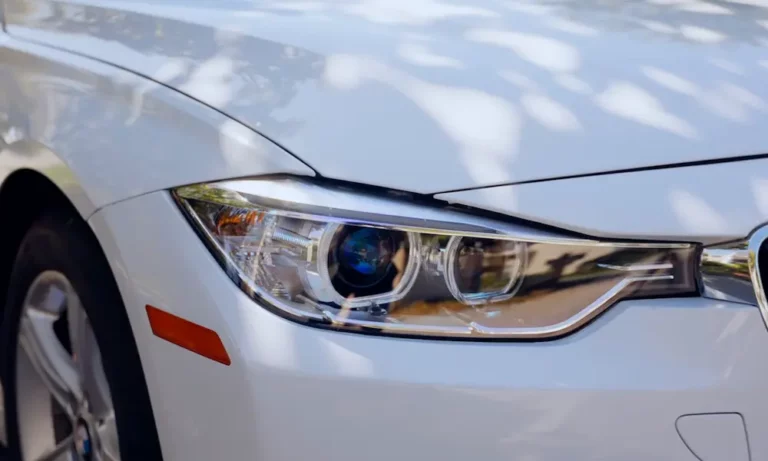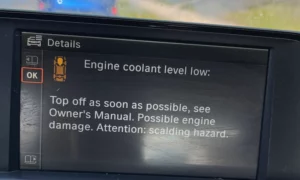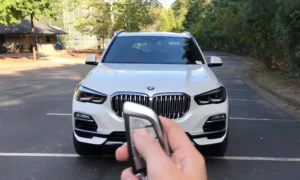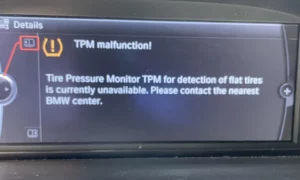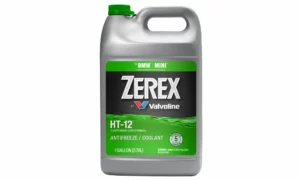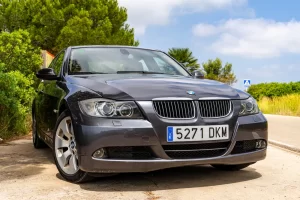Driving at night with one headlight out isn’t just annoying—it’s dangerous and potentially illegal. If you’re seeing that dreaded “low beam malfunction” message on your BMW’s dashboard, you’re dealing with a common but frustrating problem that affects numerous BMW models. Let’s shed some light on why this happens and how to fix it.
Why BMW Headlights Fail More Often Than They Should
BMWs are known for their engineering excellence, but their headlight systems seem to be a consistent pain point for owners. Modern BMW headlight systems are complex, featuring adaptive components, sophisticated electronics, and high-intensity discharge (HID) or LED technology that can fail in several ways.
Your BMW’s low beam malfunction could stem from simple bulb burnout or something more serious like moisture infiltration—a problem so widespread that BMW issued technical service bulletins acknowledging the issue.
Common Causes of BMW Low Beam Malfunctions
Failing Xenon (HID) Bulbs
HID bulbs don’t just suddenly die like traditional halogen bulbs. Instead, they show warning signs:
- Pink or purple color instead of bright white light
- Flickering or intermittent operation
- Diminished brightness over time
Many BMW owners report that their HID bulbs typically last 5-7 years before failing. One E90 owner discovered that his malfunctioning right low beam was emitting a distinctive pink color—a telltale sign of a failing xenon bulb.
Loose Electrical Connections
BMW’s complex lighting systems involve numerous connections that can become loose or corroded:
- Access panel connectors in the wheel well
- Headlight assembly wiring harnesses
- Ground connections for the lighting system
Interestingly, an i3 owner found that simply going over a speed bump had jarred a connection loose—reseating the bulb fixed the problem completely.
Moisture Inside Headlight Housing
This is perhaps the most notorious and expensive BMW headlight issue. Moisture can:
- Create visible condensation inside the headlight
- Damage electronic components
- Trigger “adaptive headlight malfunction” warnings
- Often require complete headlight assembly replacement
Ballast or Control Module Failure
When the electrical components that power and control your headlights fail:
- Your lights may work intermittently
- You might see error messages on your dashboard
- Symptoms can mimic bulb failure, but replacing bulbs won’t solve the problem
How to Diagnose Your BMW’s Low Beam Problem
1. Visual Inspection First
Start with the obvious:
- Check for visible damage to the headlight assembly
- Look for condensation or moisture inside the lens
- Examine the bulb for discoloration (pink/purple hue indicates dying HID bulb)
- Inspect connectors for corrosion or looseness
2. The Bulb Swap Test
This simple test can save you hundreds:
- Remove both the working and non-working bulbs
- Swap their positions
- If the problem follows the bulb, you’ve found your culprit
This method has helped many BMW owners determine if they need to replace just the bulb or look deeper for electrical issues.
3. Check Connections and Wiring
If the bulb swap test doesn’t reveal the issue:
- Clean all connectors with electrical contact cleaner
- Reseat connections that might have loosened
- Check the headlight wiring harness for damage
- Inspect ground connections for corrosion
4. Use BMW-Specific Diagnostic Tools
For persistent issues, you’ll need specialized help:
- BMW’s ISTA diagnostic software can identify specific fault codes
- Dealerships and specialized shops have equipment to test ballasts and modules
- Professional assessment may be necessary for moisture-related problems
DIY Fixes for BMW Low Beam Malfunctions
Replacing HID/Xenon Bulbs
If your bulb swap test confirmed a bulb failure:
- Purchase the correct replacement bulb (crucial decision point here)
- Wear gloves—skin oils can damage HID bulbs
- Access the bulb (often through the wheel well access panel)
- Remove the old bulb carefully and install the new one
- Test before reassembling everything
OEM vs. Aftermarket Bulb Decision
You’ll face an important choice:
- OEM BMW HID bulbs: $195-$200 each
- Quality aftermarket options (like Sylvania): $60-$80 each
Many forum discussions indicate that while aftermarket bulbs can work fine, some owners prefer genuine BMW bulbs to avoid potential compatibility issues with the ballasts or control modules.
Fixing Connection Problems
For connection-related issues:
- Locate access panels (usually in the wheel well)
- Clean corroded terminals with electrical contact cleaner
- Reconnect and secure any loose connections
- Apply dielectric grease to prevent future corrosion
Dealing with Moisture Problems
If you catch moisture early:
- Check the headlight ventilation membranes for damage
- Use silica gel packets inside the housing temporarily
- Consider applying a bead of silicone sealant around problem areas
However, significant moisture infiltration typically requires complete headlight assembly replacement—an expensive proposition.
Professional Repair Costs for BMW Headlight Issues
Bulb Replacement Labor
Even just replacing bulbs can be labor-intensive on BMWs:
- DIY: Just the cost of bulbs ($60-$200 depending on OEM vs. aftermarket)
- Professional installation: $50-$150 labor plus parts
- Some models require bumper or fender liner removal for access
Complete Headlight Assembly Replacement
For moisture damage or complex electronic failures:
- Standard headlight assembly: $1,000-$5,000 per side
- Adaptive headlight systems: Up to $10,000 for both sides
- Additional costs for programming and adaptation
One BMW 528X owner reported receiving estimates ranging from $7,000 at independent shops to $10,000 at the dealership for replacing moisture-damaged adaptive headlights, according to consumer reports.
BMW Models Most Affected by Low Beam Issues
While headlight problems can affect any BMW, certain models seem more susceptible:
| Model Series | Common Headlight Issues | Typical Repair Difficulty |
|---|---|---|
| E90/E92/E93 (3 Series) | Xenon bulb failures, ballast issues | Moderate |
| F10 (5 Series) | Moisture infiltration, adaptive module failures | High |
| F30 (3 Series) | Connection problems, moisture infiltration | Moderate |
| G30 (5 Series) | Adaptive headlight malfunctions | High |
| i3 | Connection issues, module failures | Moderate |
Models with adaptive headlight technology tend to have more complex and expensive problems when failures occur.
Preventative Measures to Avoid Headlight Problems
Regular Maintenance Steps
- Inspect headlight assemblies for early signs of moisture
- Check and clean connections annually
- Replace HID bulbs proactively when they start showing color changes
- Apply dielectric grease to connections during bulb changes
Environmental Considerations
BMWs seem particularly vulnerable to headlight issues under certain conditions:
- Frequent driving on rough roads (causing vibration and loose connections)
- Extreme temperature fluctuations (expanding/contracting seals)
- High humidity environments (increasing moisture infiltration risk)
When to Seek Warranty Coverage or Goodwill Assistance
If your BMW is still under warranty or the headlight problem appears to be a known defect:
- Document the issue with photos and service records
- Reference technical service bulletins about your specific problem
- Check if your vehicle falls under an existing technical service bulletin
- Request goodwill coverage if slightly out of warranty
Some owners have reported success in getting partial coverage for headlight replacements when they could demonstrate the issue was related to a design defect rather than normal wear and tear.
Is BMW Addressing These Headlight Problems?
While BMW has issued several technical service bulletins regarding headlight issues (particularly moisture infiltration), there hasn’t been a formal recall despite the frequency of complaints. The company has made design improvements in newer models, but owners of affected vehicles are generally responsible for repair costs unless covered by warranty.
BMW has acknowledged moisture problems through technical service bulletins but has resisted calls for a wider recall despite the significant repair costs faced by owners.
Making Informed Decisions About Your BMW Headlight Repair
When faced with a low beam malfunction, follow this decision path:
- Start with diagnostics to identify the specific cause
- For simple bulb failures, decide between OEM and quality aftermarket options
- For connection issues, attempt the simpler fixes before considering component replacement
- For moisture or complex electronic failures, weigh the cost of dealer repair against independent shops
- Consider the age and value of your vehicle when faced with very expensive adaptive headlight replacements
Remember that driving with malfunctioning headlights isn’t just inconvenient—it’s unsafe and potentially illegal. Addressing the issue promptly is important, even if you start with a temporary fix while planning for a more permanent solution.
By understanding the common causes and repair options for your BMW’s low beam malfunction, you’ll be better equipped to get your luxury vehicle’s lighting system functioning properly without unnecessary expense or frustration.

